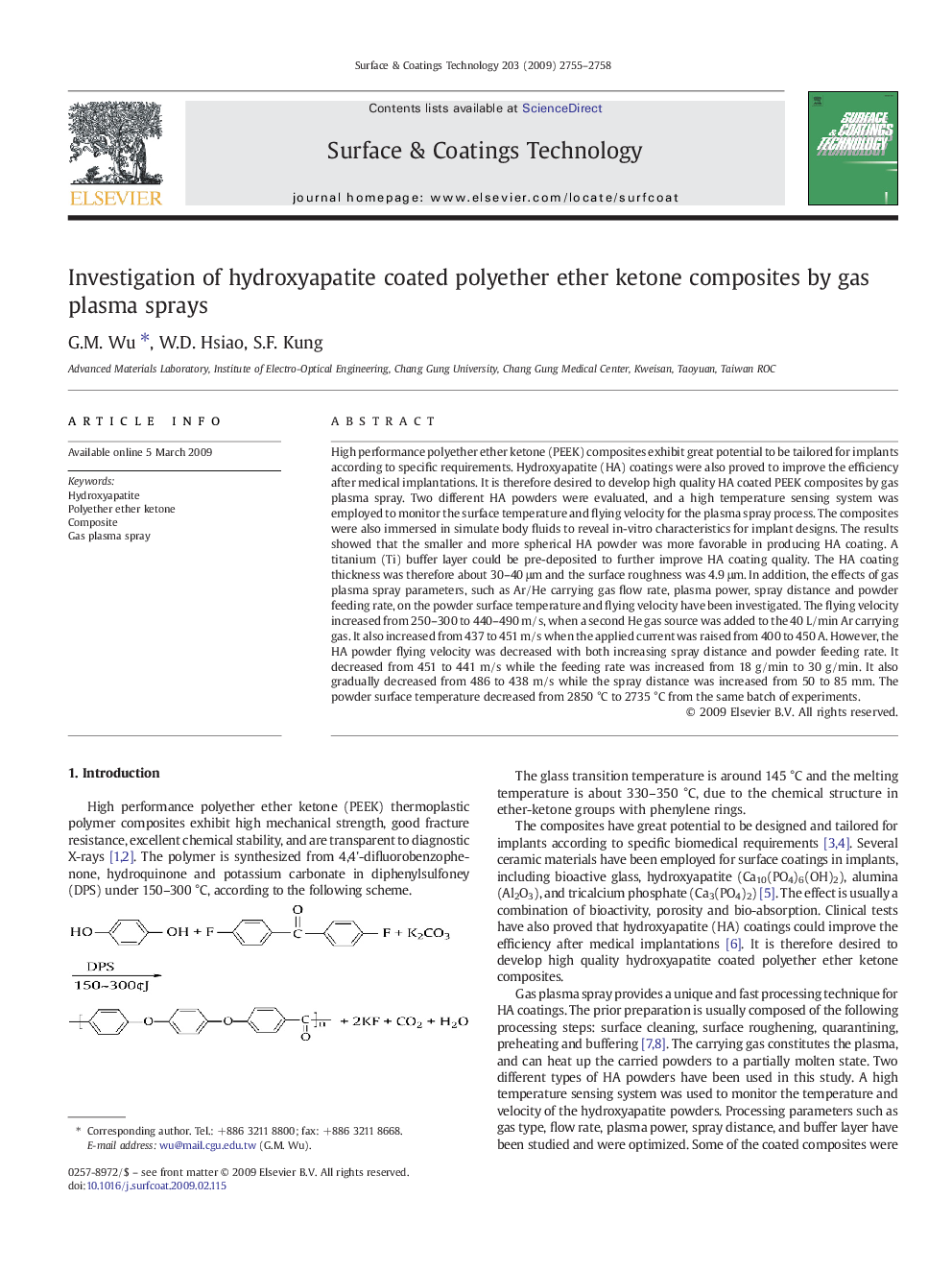| کد مقاله | کد نشریه | سال انتشار | مقاله انگلیسی | نسخه تمام متن |
|---|---|---|---|---|
| 1660223 | 1517689 | 2009 | 4 صفحه PDF | دانلود رایگان |
عنوان انگلیسی مقاله ISI
Investigation of hydroxyapatite coated polyether ether ketone composites by gas plasma sprays
دانلود مقاله + سفارش ترجمه
دانلود مقاله ISI انگلیسی
رایگان برای ایرانیان
کلمات کلیدی
موضوعات مرتبط
مهندسی و علوم پایه
مهندسی مواد
فناوری نانو (نانو تکنولوژی)
پیش نمایش صفحه اول مقاله

چکیده انگلیسی
High performance polyether ether ketone (PEEK) composites exhibit great potential to be tailored for implants according to specific requirements. Hydroxyapatite (HA) coatings were also proved to improve the efficiency after medical implantations. It is therefore desired to develop high quality HA coated PEEK composites by gas plasma spray. Two different HA powders were evaluated, and a high temperature sensing system was employed to monitor the surface temperature and flying velocity for the plasma spray process. The composites were also immersed in simulate body fluids to reveal in-vitro characteristics for implant designs. The results showed that the smaller and more spherical HA powder was more favorable in producing HA coating. A titanium (Ti) buffer layer could be pre-deposited to further improve HA coating quality. The HA coating thickness was therefore about 30-40 μm and the surface roughness was 4.9 μm. In addition, the effects of gas plasma spray parameters, such as Ar/He carrying gas flow rate, plasma power, spray distance and powder feeding rate, on the powder surface temperature and flying velocity have been investigated. The flying velocity increased from 250-300 to 440-490 m/s, when a second He gas source was added to the 40 L/min Ar carrying gas. It also increased from 437 to 451 m/s when the applied current was raised from 400 to 450 A. However, the HA powder flying velocity was decreased with both increasing spray distance and powder feeding rate. It decreased from 451 to 441 m/s while the feeding rate was increased from 18 g/min to 30 g/min. It also gradually decreased from 486 to 438 m/s while the spray distance was increased from 50 to 85 mm. The powder surface temperature decreased from 2850 °C to 2735 °C from the same batch of experiments.
ناشر
Database: Elsevier - ScienceDirect (ساینس دایرکت)
Journal: Surface and Coatings Technology - Volume 203, Issues 17â18, 15 June 2009, Pages 2755-2758
Journal: Surface and Coatings Technology - Volume 203, Issues 17â18, 15 June 2009, Pages 2755-2758
نویسندگان
G.M. Wu, W.D. Hsiao, S.F. Kung,